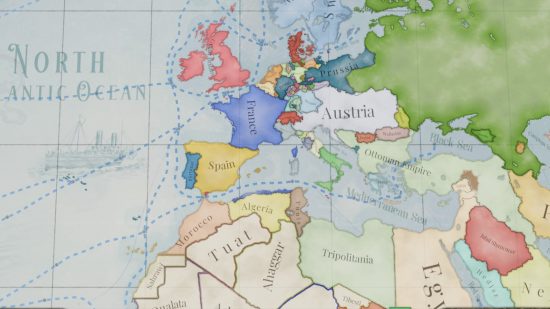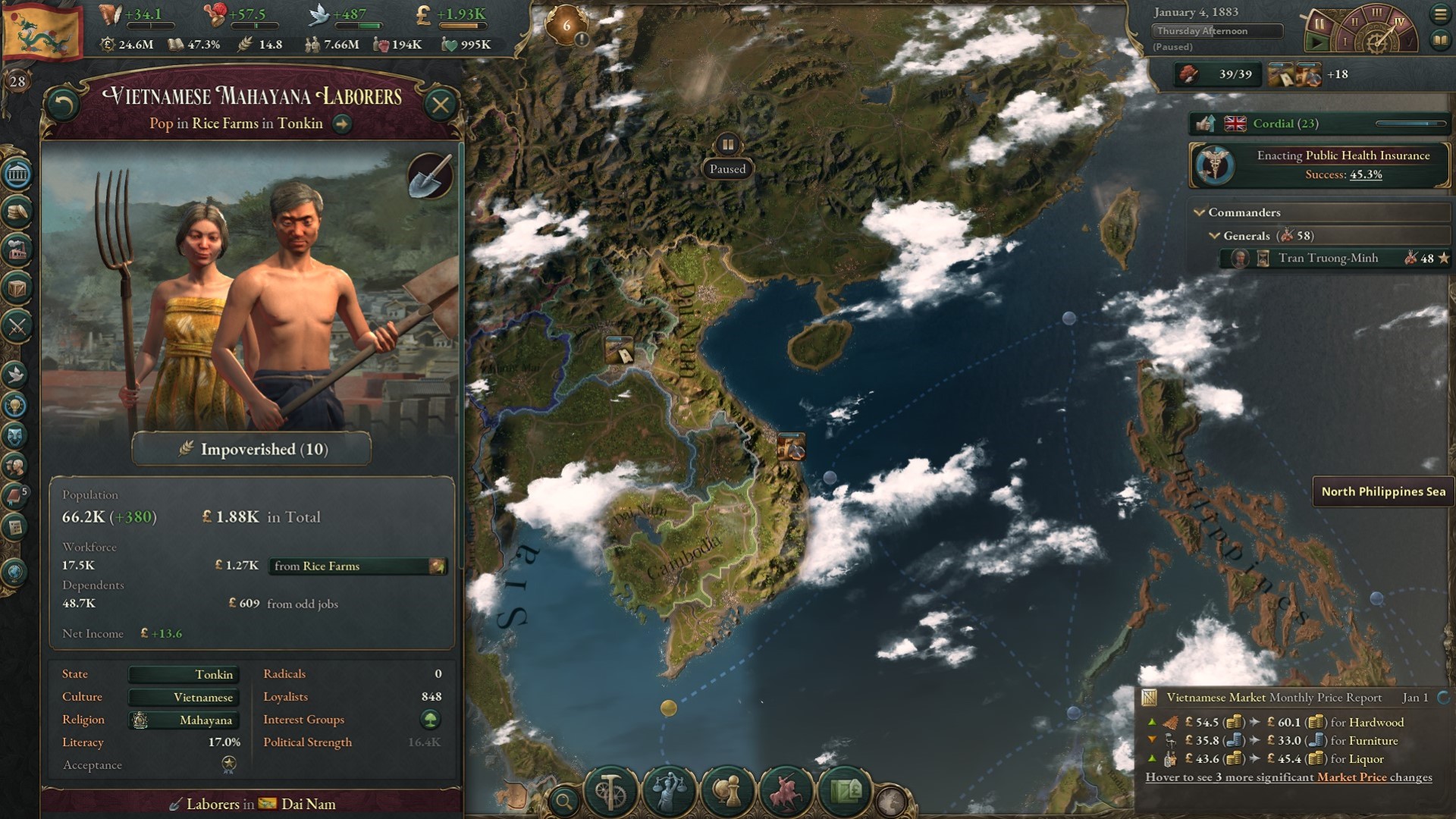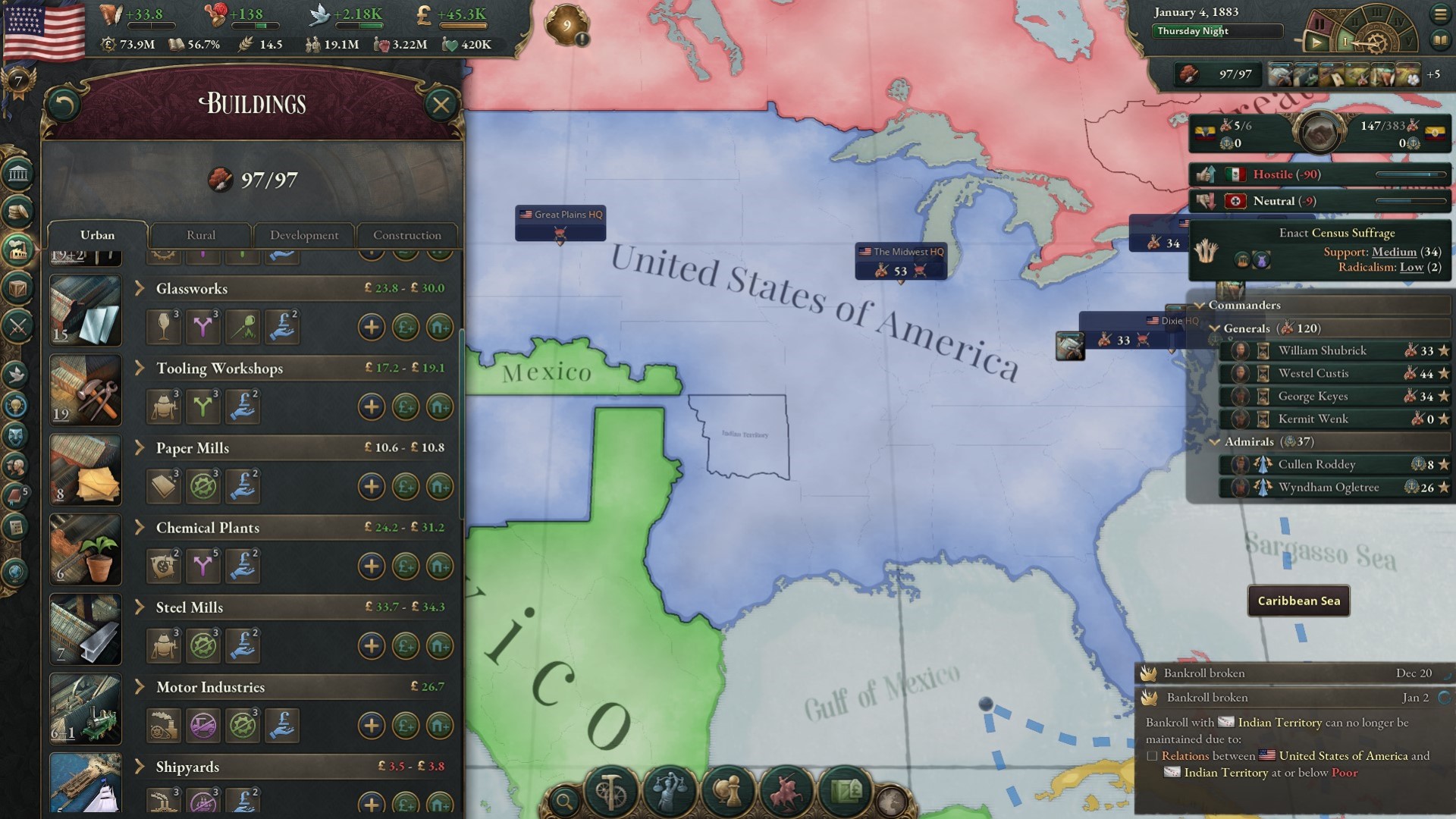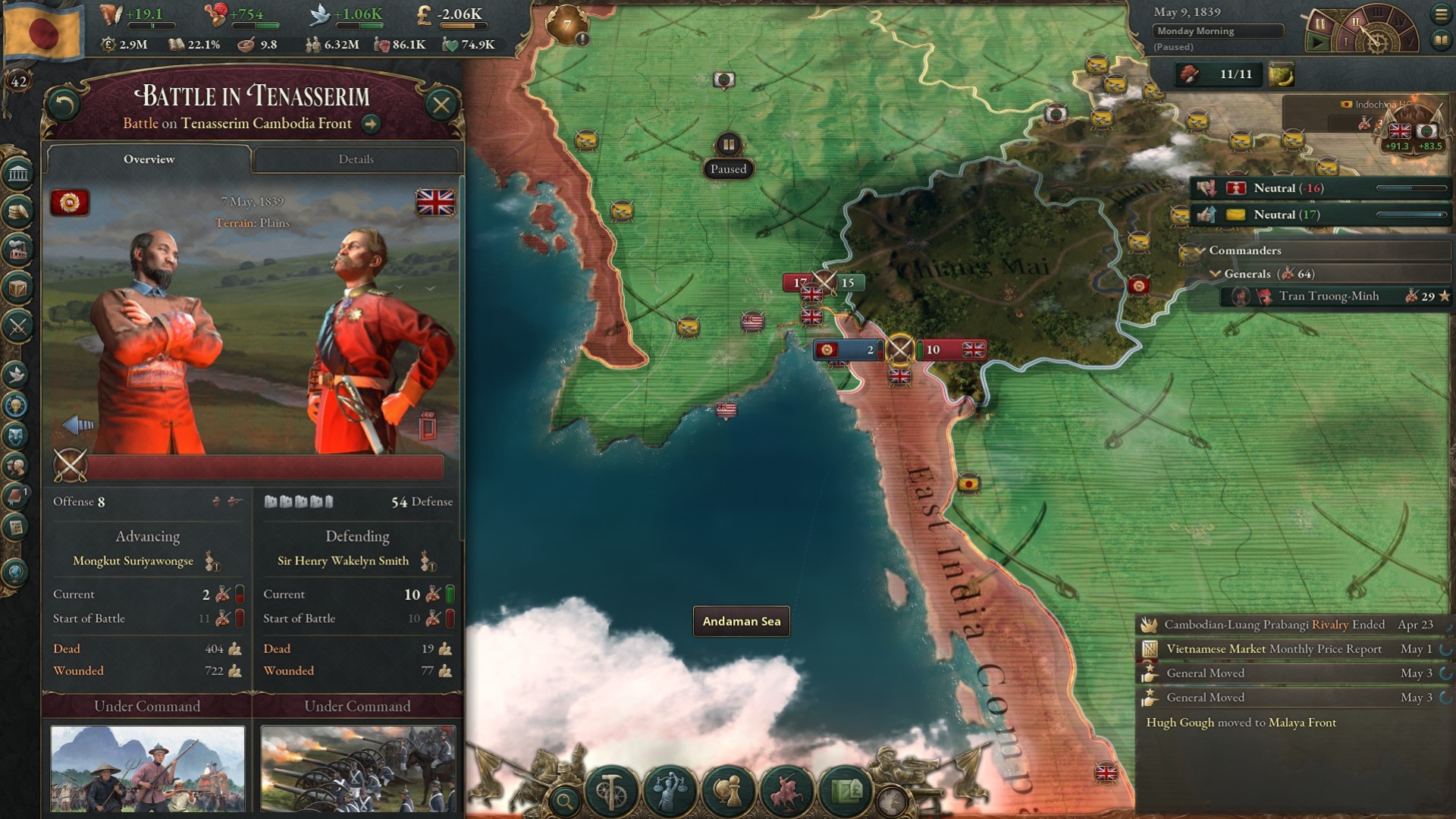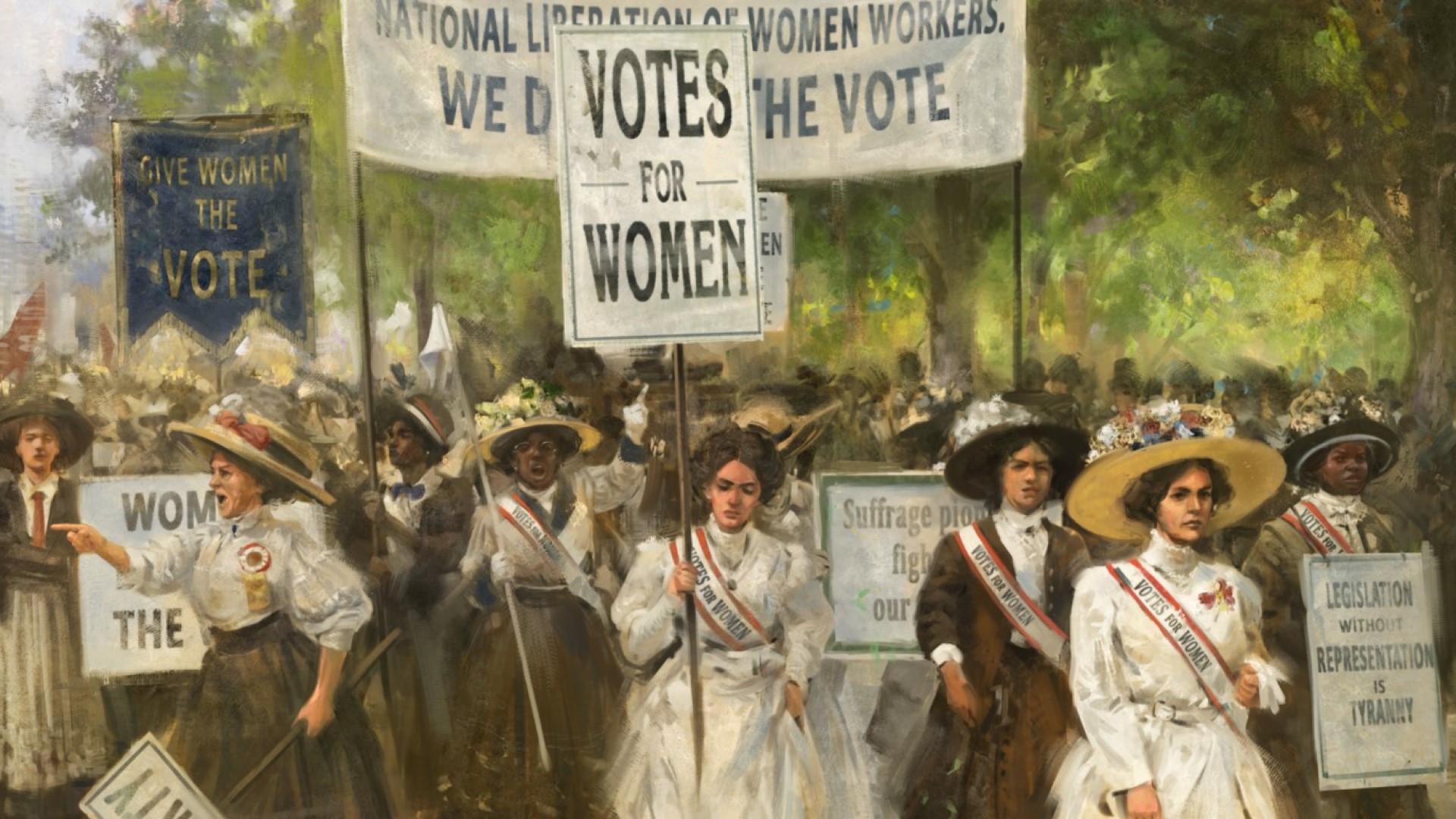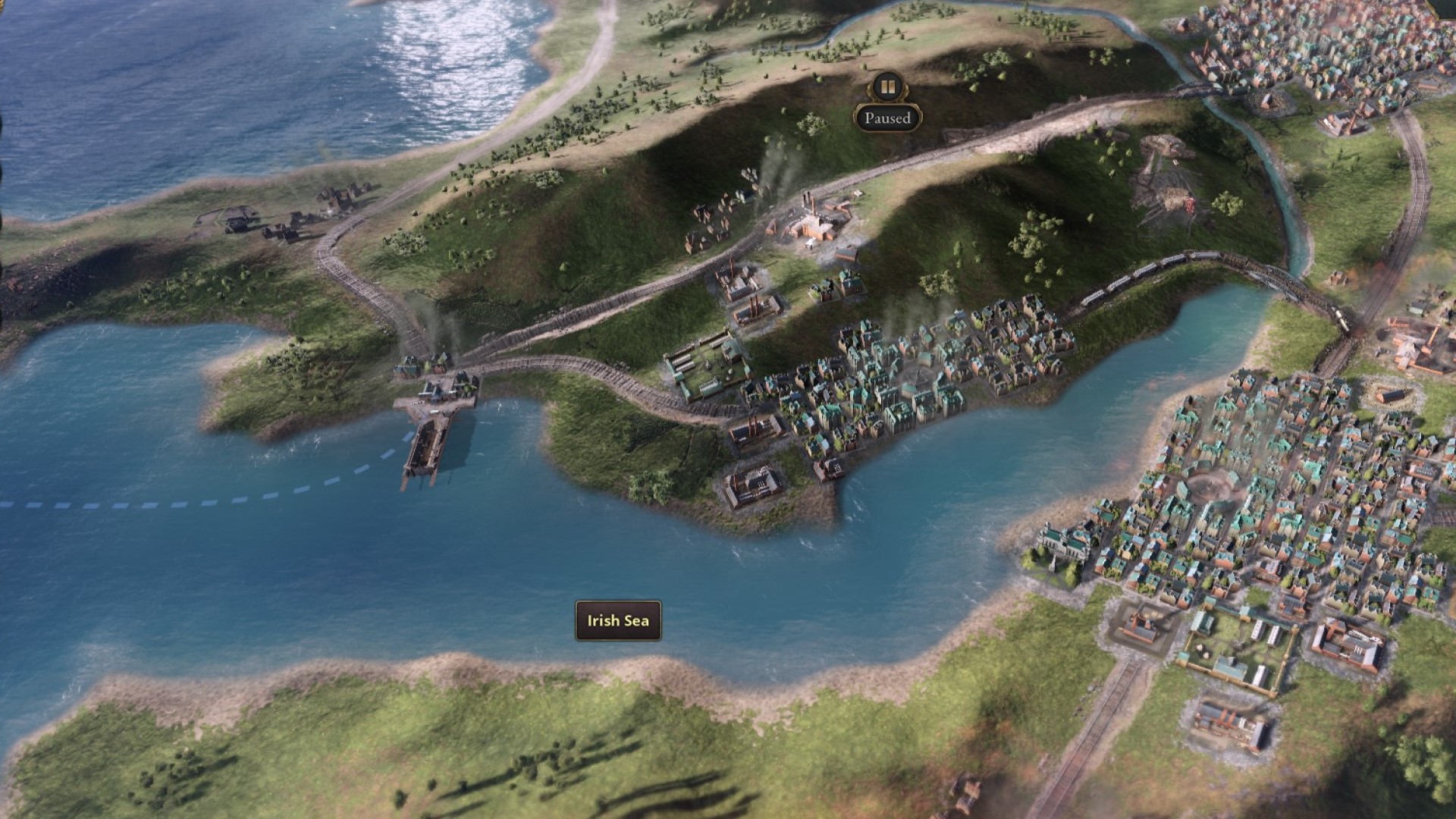Our Verdict
Victoria 3 is an extremely polished grand strategy game. Though there's room for expansion, the depth and breadth of this society and economic simulator provides plenty to sink your teeth into.
Victoria 3 is the latest grand strategy game by Paradox Interactive. It’s a nation-building game, where you’re able to take control of any country you please, from colonising superpower to pre-industrial backwater, and mould it as you see fit through the 19th and early 20th centuries.
There’s plenty of ways you can do that. You can expand your lands through conquest, or throw your weight around to exert economic dominance. You can shape society – give power to the people or keep it in the hands of the landowning elite and avoid unrest through censorship. You can foster the highest GDP, or standards of living, or become famed worldwide as the number one exporter of tables.
I had a great time with the Victoria 3 preview build, which I found to be extremely complex yet surprisingly easy to dive into. Now, just before the October 25 release date, and after some more hours to play and mull things over, time to share my overall thoughts.
One of the biggest innovations in Victoria 3 is its ‘pops’ system. This is a remarkable feature, allowing the game to effectively simulate the entire population of the world, and letting you zoom in and check out exactly how everyone in your nation is doing – what’s irking them, what they’re buying, and how much they’re paying for it.
That doesn’t mean you can click on citizen #1,000,2009, Bob Smith, barley field owner and see what he had for lunch. But you do get an extremely detailed breakdown, nonetheless. You can see how many workers of a particular type there are employed at a particular building, of a particular culture, particular religion, political affiliation, and so on: 1000 English, Protestant, clergymen in the livestock ranches of Lancashire, for instance. The game keeps track of all these people, shuffling them around as professions change and folks move from group to group.
The pops system is perhaps the best illustration of how everything in Victoria 3 is so tightly interwoven. The pops influence everything else in your country, from the goods you need to produce or trade for, to the policies you can safely implement. And every action you take changes what pops there are in your nation.
However, while it’s an awesome feat, and important to keep an eye on on the macro level, to get a sense of where affiliations and power lie, the feature is one I never felt very connected to. It’s impossible to keep track of every incremental and granular change to your pops, so while I was aware this amazing piece of wizardry was chugging away in the background, in the background was where it mostly remained – a really neat curio, that I got out the cupboard every and now and then. What seems to me a far more important part of hour to hour gameplay in Victoria 3, and where most of my micromanaging efforts were focused, is the game’s buildings system.
In my view, the economic side of Victoria 3 is the strongest part of the game. If numbers getting larger or going from red to green do nothing for you, Victoria 3 might not push your buttons. It’s not too heavy, however. While some terms like ‘investment pool transfer’ admittedly made my mathematic-averse eyes glaze over, the meat of it is about managing what goods are produced, and what methods are used to make them, ensuring you’re making the right things so that buildings remain profitable and your peasants can afford grain (for instance).
As I said about the preview build, this is a satisfying and constantly shifting puzzle. You could make a whole game about managing Victoria 3’s tangled web of related goods and trying to balance the books. The economic system throws up all kinds of interesting decision-making. For instance, trying to cosy up to the Great Qing as Vietnam, I considered a trade agreement that would eliminate tariffs and bureaucratic costs between our countries. This tanked my revenue – we were exporting thousands of tons of tools to them at exorbitant rates – but would help get them on side for upcoming conflicts, and also enable a ton of tiny import routes for everything from fish to furniture, which set my standard of living soaring.
Speaking of diplomacy, it’s a little abstract, sometimes unclear what’s caused a country to get super friendly or aggressive with you, but on the whole works well. Unlike Crusader Kings, or Hearts of Iron, where you’re fairly restricted on who you can interact with or fight, nations in Victoria 3 can get involved in each others’ business all the time. You just pick areas of strategic interest (which are a doddle to change) and then you’re all set to start making friends or enemies in any corner of the globe.
I found the political side of war in Victoria 3 to be quite interesting, partly as a result of this. Small nations can win wars with much stronger opponents, providing they have friends in high places. Conflicts are started through diplomatic plays, where one nation makes a demand off another. Sometimes, depending on how greedy those demands are and how mighty your military is, you can get your own way without a shot being fired. Otherwise, interested parties can jump in on either side, and the countdown to war starts ticking.
War feels appropriately risky, in a game where war is not the focus, because it’s rather unpredictable. Before starting a diplomatic play you’ll be told which nations are likely to join either side, but the majority will be in the “could go either way” camp. This means the balance of power can swing rather unexpectedly against you, leading to hairy situations (read: save scumming) as a power you thought had your back sides with your opponent. Some might find that a bit frustrating, but I enjoyed how dangerous war felt (though, as I say, that didn’t stop me loading up an old save when I ballsed everything up).
However, once conflict actually begins, war is the weakest part of Victoria 3. That’s because the outcome of any scuffle is likely to be decided by decisions made before the battle – the state of your military, and if you can afford it. You simply assign generals to a front and it mainly plays out automatically, with little room to win wars through cleverness on the field.
The Victoria series is often touted as a society builder, and in Victoria 3 you’re more likely to be waging internal wars, against belligerent political groups, than to be constantly butting heads with other nations. Politics provides an engaging diversion from the nitty gritty numbers of managing buildings. There’s incentives to be progressive, to move power away from the landowners, providing healthcare, voting rights, abolishing slavery, opening up the economy, etc. As you grow your economy, you’ll need a better educated, and therefore more politically motivated populace, full of industrialists and intelligentsia, who’ll be unhappy if these things aren’t happening.
However, you can’t move swiftly, or you’ll topple into chaos. It’s a gradual process and you’ll be constantly battling against vying political groups, trying to keep everyone happy enough that they don’t revolt while slowly, slowly prying power away from the old guard. While this is enjoyable, I did tend to follow the same general patterns in each playthrough. Partly that’s my own doing – the same impetus that always has me pick the ‘good’ options in RPGs steered me away from trying out censorship or secret police, and I also know it’s possible to create a radical socialist society. But all the same, I don’t think there are a zillion different directions you can go, and I suspect the politics puzzle will follow similar beats most of the time.
One of the finest feathers in Victoria 3’s cap (presumably a Victorian urchin’s flatcap) is its accessibility. It’s gorgeous to look at, and filled with tutorials that help you to play. I’d say it does what CK3 did for the Crusader Kings series, except it’s much more noticeable here, because Victoria 2 had a much higher barrier to entry than CK2.
First off, it has very pretty visuals, which, sure, not everyone cares about, but it certainly does broaden the game’s mainstream appeal. Secondly, Victoria 3 has got the excellent tool tips system from Crusader Kings 3 that provides neat explanations and definitions for every system and unfamiliar term. And then on top of that there’s also a journal that can provide direction, guiding you – if you choose to follow its guidance – to complete particular challenges.
As well as providing some direction that can help a new player, this journal system can also add a lot of variety and interest to the game, with flavourful events and tasks to complete. Obviously some nations get more love here than others. In just a few months as Great Britain you’re dealing with opium wars and tracking down Jack the Ripper, but there’s far less going on in smaller nations. This in particular seems like an area that’s ripe for Paradox-style DLC expansions.
Overall, Victoria 3 is an extremely polished grand strategy game. Its interwoven and detailed systems work seamlessly together, like cogs and gears spinning in a well-oiled machine, creating an awesome simulation. Certainly some systems are stronger than others, but nothing feels half baked. There are interesting decisions to be made at every level, but the game is simultaneously easy to play – I found you can, for instance, turn 1900 Vietnam into a bigger industrial power than most European countries without much finesse, just by relentlessly pursuing the path of progress.
I have some slight concerns that Victoria 3 may, like Crusader Kings 3 did on launch, feel a little samey after the first half a dozen playthroughs. Perhaps it’s just because I know that’s what it is, but I did feel at times like I was playing a ‘base’ game that’s ready to be opened up with expansion packs. Part of that is doubtless because I lacked the inclination to make super radical choices or the experience to exploit all of the game’s many mechanics. Either way, Victoria 3 is a rich, detailed game, packed with content and interesting systems to engage with. I think Paradox fans are going to love it.
